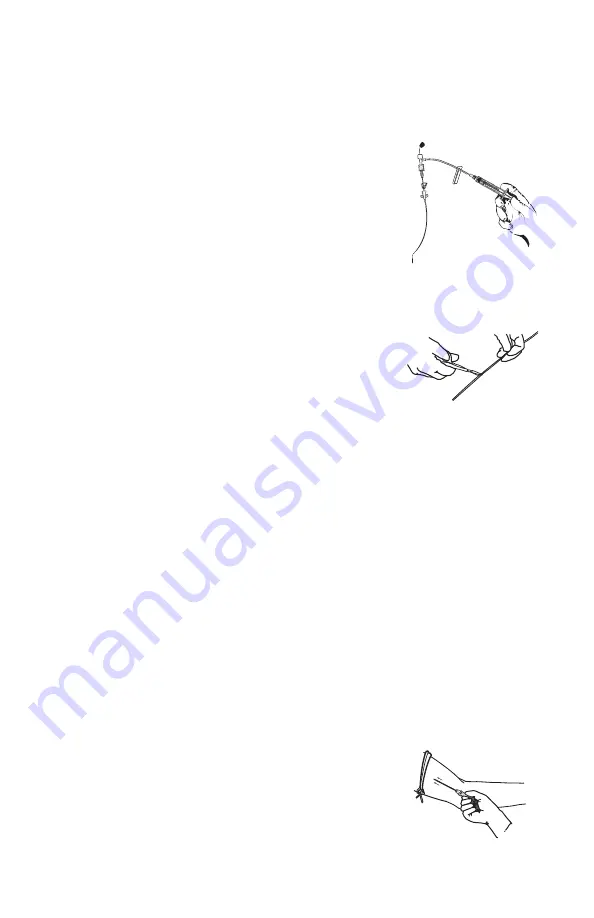
8
C.
Apply fenestrated drape and complete sterile field preparation.
5.
Pre-flush the Catheter
Caution:
Do not clamp extension leg when stylet or stiffening wire is in catheter to
minimize the risk of component or catheter damage.
Caution:
Catheter stylet must be wetted prior to stylet
repositioning or withdrawal.
A.
Attach a prefilled syringe to the luer attachment on the
T-Lock extension set.
B.
Pre-flush all catheter lumens with sterile saline to wet
hydrophilic stylet.
C.
Remove the syringe after pre-flushing.
6.
Modification of Catheter Length
WARNING:
Do not use the catheter if there is any evidence of mechanical damage
or leaking. Damage to the catheter may lead to rupture, fragmentation, possible
embolism, and surgical removal.
NOTE:
Catheters can be cut to length if a different length
is desired due to patient size and desired point of insertion
according to hospital protocol. Catheter depth markings
are in centimeters.
A. Measure the distance from the zero mark to the desired tip location.
B. Disconnect the T-Lock from the catheter luer connector.
C. Withdraw the entire T-lock connector/stylet assembly as one unit.
Caution:
Catheter stylet must be wetted prior to stylet repositioning or withdrawal.
D. Retract the stylet to well behind the point the catheter is to be cut.
Caution:
Do not allow accidental device contact with sharp instruments. Mechanical
damage may occur. Use only smooth edged, atraumatic clamps or forceps.
E. Using a sterile scalpel or scissors, carefully cut the catheter according to institutional
policy, if necessary.
Caution:
The stylet or stiffening wire needs to be well behind the point the catheter
is to be cut. NEVER cut the stylet or stiffening wire.
F. Inspect cut surface to assure there is no loose material.
G. Re-advance the T-lock connector/stylet assembly. Assure stylet tip is intact.
H. Lock the T-Lock connector to the catheter hub.
I. Gently retract the stylet through the locked T-lock connector until the stylet tip is
contained inside the catheter.
WARNING:
Ensure that the stylet tip does not extend beyond the trimmed end of
the catheter. Extension of the stylet tip beyond the catheter end may result in vessel
damage, stylet damage, difficult removal, stylet tip separation, potential embolism
and/or risk of patient injury.
7. Perform Venipuncture
A. Anesthetize with local anesthesia as required.
B. Insert the safety introducer needle into the desired vein.


































